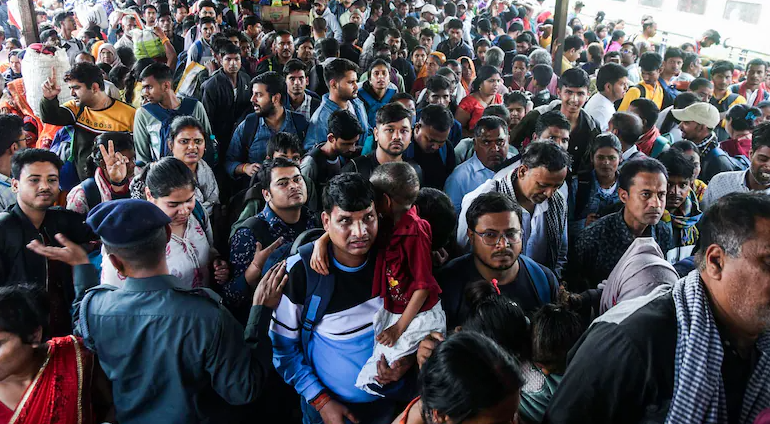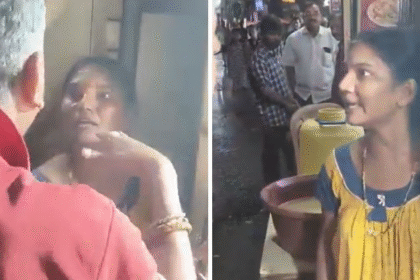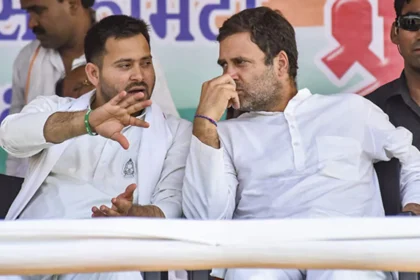India’s 2025 Digital Census: 140 Crore Citizens Can Now Self-Ennumerate Online for the First Time
India’s 2025 digital census introduces online self-enumeration for all 140 crore citizens, marking a major step in the country’s population data modernization.
A New Chapter in Indian Census History
India is poised to conduct its first fully digital population census, a historic initiative that will deploy mobile technology, secure digital platforms, and self-enumeration systems across its vast and diverse territory. Scheduled in two phases beginning April 1, 2026, and February 1, 2027, this marks the 16th Census since 1872, and the 8th since Independence — but the first to fully embrace electronic enumeration, thereby departing from the age-old pen-and-paper tradition.
Announced formally through a gazette notification on June 16, the digital census will rely on a massive digital infrastructure backbone, with enumerators using specially designed mobile applications compatible with Android and iOS, and a dedicated online self-enumeration portal accessible to the general public.
The scale, technological innovation, and administrative restructuring that the digital census entails signal a transformative leap for Indian governance, data collection, and future policy planning.
🔹 Self-Ennumeration for the First Time: Empowering Citizens to Record Their Own Data
For the first time in India’s history, the Census of India will allow citizens themselves to participate in the enumeration process through a secure and accessible self-enumeration portal. This system will be available during both phases:
- Houselisting and Housing Census (HLO)
- Population Enumeration (PE)
According to officials at the Registrar General and Census Commissioner of India (RGI), this citizen-led data submission will:
- Reduce dependence on door-to-door enumeration,
- Increase data accuracy and reduce human errors,
- Encourage greater citizen engagement in governance,
- Allow for real-time integration with central databases.
The government expects this approach will resonate especially with tech-savvy urban populations, who often express hesitancy toward in-person visits or inconsistent data handling.
“This is a significant shift — from passive documentation to active civic participation,” said a senior census official.
🔹 Mobile Apps for Enumerators: Android and iOS Integration at Scale
Enumerators, the traditional foot soldiers of the census, will now operate through custom-designed mobile apps to collect data. These apps will function across Android and Apple devices, and will be programmed to:
- Auto-sync data to the centralised Census server,
- Enable offline functionality in low-connectivity areas,
- Support GPS tagging of enumeration blocks,
- Provide instant validation against predefined logic models.
Officials confirm that 34 lakh enumerators and supervisors will undergo structured training across India to use this app ecosystem effectively.
This system ensures that data redundancy, duplication, and transcription errors are minimized — a major drawback in previous paper-based operations.
🔹 Data Security Protocols: Layered Encryption and Transmission Safeguards
Recognising the scale and sensitivity of the data involved, the government has assured that the Digital Census infrastructure will incorporate “very stringent” security protocols. The objective is to ensure end-to-end encryption at three key stages:
- Data Collection – on enumerator devices,
- Data Transmission – from device to cloud,
- Data Storage – at secure government servers with multilayer firewall architecture.
“From device authentication to data packet encryption and server security, the safeguards being developed are equivalent to what is used in defence-grade applications,” a senior officer at the Ministry of Electronics and IT told Liberty Wire.
Cybersecurity audit partners from national research institutions and independent agencies are expected to review protocols before April 2026.
🔹 Key Census Dates: From Enumeration to Reference Timestamp
The digital census operation will unfold in two critical phases:
- Phase 1: Houselisting and Housing Census (HLO)
Start Date: April 1, 2026
This phase will include collection of data about housing stock, amenities, building conditions, drinking water sources, fuel usage, and sanitation. - Phase 2: Population Enumeration (PE)
Start Date: February 1, 2027
This phase will focus on individual and household-level data, including name, sex, age, relationship, marital status, education, occupation, religion, caste, disability, and migration status. - Reference Timestamp for Census 2027:
For most of India, the reference time will be 00:00 hrs on March 1, 2027.
However, for Union Territories of Jammu & Kashmir, Ladakh, and snowbound areas of Himachal Pradesh and Uttarakhand, it will be 00:00 hrs on October 1, 2026.
These reference times are crucial to ensure synchronised snapshots of the national demographic profile.
🔹 Inclusion of Caste Enumeration: Structural Shifts in Demographic Mapping
A major revelation confirmed by RGI officials is that the upcoming Census will include caste enumeration. While caste has historically been excluded post-1931 (except for SC/ST categories), this Census will:
- Collect caste data of every individual in every household,
- Help design targeted welfare schemes with better data,
- Support economic and social planning across caste groups.
This has been a politically sensitive demand across several states including Bihar, Odisha, and Maharashtra — and now represents a landmark data policy shift.
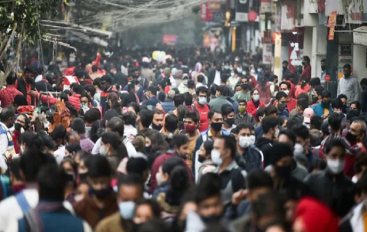
🔹 Administrative Reforms and Territorial Boundary Freezing
To ensure uniformity and avoid overlapping enumeration, the government has instructed all states and Union Territories to freeze changes in administrative boundaries by December 31, 2025. This means:
- No further reorganisation of districts, sub-districts, tehsils, talukas, or police station jurisdictions can occur post-freeze,
- Every administrative unit will be locked and documented for census operations.
The RGI has written to all Chief Secretaries stating that enumeration blocks will be finalised based on this map, and any deviation after December will not be entertained, as per census norms.
🔹 3-Tier Training Model for Enumerators
A hierarchical three-tier training structure is being deployed for the census workforce:
- National Trainers
- Master Trainers
- Field Trainers
This model will ensure that each level of census worker is equipped not only with the technical skills to handle mobile apps, but also trained in:
- Data accuracy practices,
- Citizen interaction ethics,
- Contingency planning for rural and low-connectivity areas.
In total, over 34 lakh personnel will be trained through this model — making it one of the largest single administrative training exercises in India’s history.
🔹 Digital Census as a Gateway to Policy 2.0
The Digital Census of India marks the convergence of governance, technology, and citizen empowerment. With the 2026–27 Census set to redefine how population data is collected, processed, and applied in governance, India now stands at the cusp of an administrative transformation.
By giving citizens the tools to self-enumerate, and using mobile platforms for fieldwork, the census promises not only efficiency, but inclusivity, security, and faster turnaround of national data.
Behind the Digital Promise, A Complex Reality
While the upcoming 2026–27 Digital Census has been hailed as a revolutionary leap in India’s demographic data architecture, the transition from traditional enumeration to a full-fledged tech-driven model is not without significant hurdles. Despite the administrative enthusiasm and digital optimism, officials and civil society experts warn of a range of ground-level realities that could disrupt, delay, or dilute the goals of the digital census.
From internet penetration issues in rural and remote areas, to low digital literacy among citizens, to state-level political resistance and data privacy concerns, the project stands at the intersection of promise and peril.
This part explores those tensions — logistical, technological, and political — that could define whether the first Digital Census is a success story or a cautionary tale.
🔹 Internet and Device Access: The First Barrier to a Digital Rollout
The most immediate challenge facing the Census Commission is the inequality of access to digital infrastructure across India. While cities may adapt easily to the use of smartphones, apps, and online portals, large swathes of the country — particularly in rural Uttar Pradesh, Bihar, Chhattisgarh, Odisha, and the Northeast — continue to suffer from:
- Poor internet coverage,
- Low smartphone penetration,
- High dropout rates among adolescents unfamiliar with digital tools,
- A dependence on non-digitised birth and land records.
In districts like Araria in Bihar, Kalahandi in Odisha, and Dima Hasao in Assam, local administrators told Liberty Wire that enumerators often carry printed forms even during Aadhaar drives, due to unreliable networks and power supply.
“We welcome the digital census. But 3G and 4G are patchy in many areas. Even WhatsApp video calls drop,” says Manish Verma, a District Magistrate in eastern Uttar Pradesh.
The Census Commission has announced that the enumerator app will include offline functionality, which allows the data to be captured without real-time connectivity. However, questions remain:
- How will synchronisation delays affect data timelines?
- Can offline data be manipulated in transit?
- What happens if a device crashes before uploading?
These concerns underscore the gap between technological ambition and infrastructural reality.
🔹 Digital Literacy Among Enumerators and Citizens
A challenge distinct from access is awareness and training. India’s digital infrastructure rollout has long outpaced digital education, especially among:
- Women in rural areas,
- Elderly citizens unfamiliar with online platforms,
- First-generation learners.
In the census context, this digital literacy gap manifests in two ways:
- Enumerators: Many government school teachers and panchayat workers, who double as census enumerators, lack experience in digital data collection or the use of smartphone apps for official work.
- Self-Ennumerating Citizens: For self-enumeration to succeed, average citizens must:
- Log in securely,
- Correctly enter complex demographic details,
- Navigate multilingual menus.
Even in pilot trials conducted in select urban wards of Delhi and Pune, officials found:
- High error rates in data entries,
- Inconsistent understanding of caste, religion, and occupational categories,
- Reluctance among older adults to input data themselves.
The Census Commission is working on multi-language UI/UX designs, video tutorials, and helpline integration, but these solutions require months of socialization to take root in public behavior.
🔹 Political Pushback from States: Autonomy, Caste, and Trust Issues
One of the most politically sensitive aspects of the digital census is the inclusion of caste data for all communities — a demand raised by multiple regional parties but also a flashpoint of Centre–State friction.
While states like Bihar, Tamil Nadu, Maharashtra, and Odisha have demanded or conducted their own caste surveys, other states, especially those ruled by the BJP, are wary of how caste enumeration might:
- Alter welfare formulae,
- Trigger regional caste-based agitation,
- Be weaponized politically in the run-up to 2026 or 2029 elections.
In Bihar, where a state-led caste survey was conducted in 2023, the Nitish Kumar-led government welcomed the central move. But parties in the INDIA bloc are warning that the digital format could lead to underrepresentation of marginalised castes, citing:
- Lack of caste awareness among citizens,
- Fear of self-identifying as OBC or Dalit on public platforms,
- Potential misuse of caste data by political parties or private entities.
“Digital enumeration of caste must be accompanied by massive awareness and privacy guarantees. Or else, the data will be skewed and dangerous,” said Professor Rakesh Sinha, a sociologist at Delhi University.
Meanwhile, states with insurgency-affected or tribal-dominated zones — like Jharkhand, Manipur, and parts of Chhattisgarh — are also wary of surveillance concerns, citing past episodes of demographic data misuse.
🔹 Data Privacy and Consent: Civil Society Raises the Alarm
The scale of the Digital Census makes it one of the largest citizen-data exercises in the world — far exceeding the Aadhaar enrolment drive in both depth and complexity. And that is raising red flags in civil liberties circles.
Among the biggest concerns:
- Informed consent protocols for self-enumeration,
- Data linkage with Aadhaar, EPIC, or property IDs,
- Whether individual caste, income, or religious data will be protected from misuse by state or non-state actors.
In 2024, the Digital Personal Data Protection Act was passed, but critics argue that:
- It leaves broad exceptions for “public interest use”,
- There is no independent data protection authority yet active,
- Census data might be used beyond planning — including political micro-targeting.
Civil society organizations like the Internet Freedom Foundation (IFF), Software Freedom Law Center, and the PUCL have urged the government to:
- Publish a clear data-sharing and anonymisation protocol,
- Allow third-party audit of security frameworks,
- Create a grievance redressal mechanism before the census rollout.
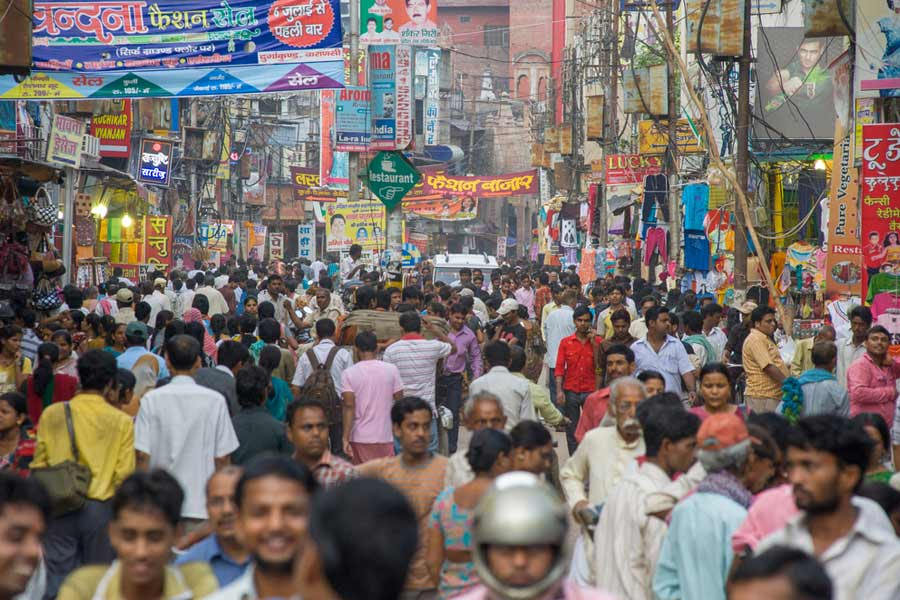
🔹 Preparedness of Tribal and Snowbound Regions
In regions like Ladakh, Jammu & Kashmir, Himachal Pradesh, and Uttarakhand, officials face unique challenges tied to:
- Extreme weather, making digital access seasonally unviable,
- Transhumance populations that move with seasons,
- Sparse and scattered habitation, requiring geo-tagging adjustments.
In these regions, the reference date has been preponed to October 1, 2026, but many officers are still waiting for:
- High-res satellite-based enumeration maps,
- Localised training modules in native languages like Ladakhi, Gaddi, and Bhoti,
- Offline-compatible census devices with solar charging kits.
District Collectors in Kargil, Lahaul, and Bageshwar have reportedly sought custom enumeration plans and flexible app deployment schedules.
🔹 A Complex Terrain Between Vision and Execution
The Digital Census of 2026–27 is a visionary initiative, designed to elevate India’s governance to a data-first, citizen-inclusive model. But as this section reveals, that vision now confronts the practical constraints of India’s socio-political landscape.
To succeed, the census must not just deploy technology — it must also build trust, bridge knowledge gaps, overcome infrastructural divides, and address political sensitivities with transparency, clarity, and care.
Whether this will be achieved by April 2026 depends on what comes next: training, testing, transparency — and above all — public trust.
The Tech-Workforce That Will Power India’s Digital Enumeration
Behind the transformative vision of the 2026–27 Digital Census lies a sprawling network of technology systems, human capital, and backend protocols that must come together flawlessly. The stakes are enormous — India is not only shifting from manual to mobile-based census-taking, but doing so while mobilizing over 34 lakh workers, navigating linguistic and regional diversity, and implementing an entirely new digital infrastructure across 28 states and 8 Union Territories.
This part of the series takes readers deep into the preparatory backbone of India’s digital census: from training of enumerators to deployment of apps, test rollouts, data validation mechanisms, and the national data stack powering the backend.
🔹 Three-Tier Training Model: Scaling Up Human Preparedness
To build capacity among the lakhs of field personnel who will collect digital data, the Registrar General of India (RGI) has created a three-tier cascading training model, composed of:
- National Trainers:
Experts trained directly by RGI officials and domain experts from NIC and Ministry of Home Affairs. - Master Trainers:
Each state is assigning dedicated personnel who will train district-level officials and coordinators. - Field-Level Trainers:
These will provide hands-on instruction to over 34 lakh enumerators and supervisors, including real-time app demos, case scenarios, conflict management, and error-handling.
The training programs include:
- Mock enumerations using mobile apps,
- Data entry drills,
- Offline-to-online data syncing exercises,
- Cyber hygiene and device handling instructions,
- Interactive content in 22 official languages and additional tribal dialects (where required).
“We’re not just training for enumeration — we’re training for digital trust. The goal is for every enumerator to become both data collector and digital ambassador,” said an official from the training cell in Bengaluru.
🔹 Enumerators’ App: Design, Features, and Offline Capabilities
At the heart of the digital census operation is the enumerator app, a secure and lightweight mobile application compatible with Android and iOS devices. Designed by NIC in collaboration with tech partners and cybersecurity consultants, the app features:
- Multilingual interface with regional script support,
- Real-time GPS tagging for verification of enumeration blocks,
- Data input forms mapped to both Houselisting and Population Enumeration modules,
- Built-in validation logic to prevent logical inconsistencies,
- Photo ID scanning capability,
- Offline operation mode for remote areas, with encrypted upload once internet is restored.
The app will be deployed through an internal census mobile app store, with device-specific authentication protocols to avoid duplication or misuse.
Officials confirmed that beta versions of the app were successfully tested in selected wards in Delhi, Pune, Varanasi, and Kohima between March and May 2025.
🔹 Backend Systems: Cloud Infrastructure, Data Synchronisation, and Analytics
The backend infrastructure of the 2026 census is powered by a robust centralised data architecture, consisting of:
- Secure Government Cloud (MeghRaj) servers,
- Automated load balancing across regional datacentres,
- An enumeration analytics dashboard accessible to district and state officials,
- Real-time progress indicators for enumerator performance and data gaps,
- Geo-fencing and geo-tagging of enumeration blocks to avoid omissions or overlaps.
The cloud systems have been designed to handle peak loads from simultaneous data inflow across India’s 7,000+ towns and 6 lakh villages, without compromising on latency, accuracy, or security.
“From enumeration block mapping to anomaly detection, the backend dashboard will allow micro-level monitoring of census operations — something never before possible in Indian census history,” said an RGI IT architect.
🔹 Testing and Feedback Loops: Pilot Surveys and Error Audits
Before the nationwide rollout, the government has completed or is conducting pilot censuses in:
- Delhi (urban beta),
- Varanasi (semi-urban),
- Gadchiroli (tribal/rural),
- Itanagar (hilly/Northeast),
- Leh (snowbound).
Each test is designed to study:
- Enumerators’ adaptability to app workflows,
- App performance in low-bandwidth or offline scenarios,
- Error frequency in self-enumeration portal,
- Data syncing delays or duplications,
- Feedback from citizens on ease of access, clarity, and accuracy.
A special Census Tech Evaluation Committee has been constituted to audit:
- Data drop-out rates,
- Logical errors in entry,
- Successful sync ratios,
- Regional app language efficacy.
Learnings from these pilots are being codified into an internal Digital Census Playbook which will serve as a field guide for all state coordinators.
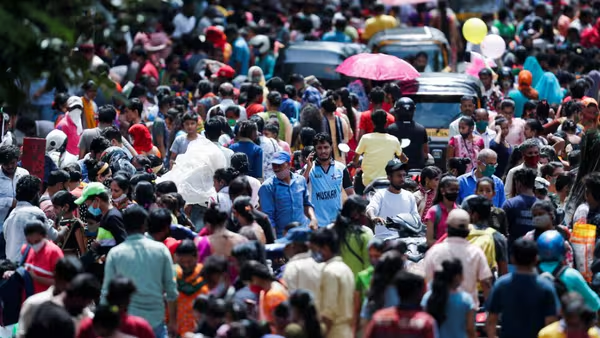
🔹 Enumerating the Excluded: Strategy for Homeless, Nomadic, and Migrant Populations
Recognising the limitations of a digital-first strategy for vulnerable populations, the RGI has drawn up special plans to include:
- Homeless citizens in urban slums,
- Nomadic tribes,
- Seasonal agricultural migrants,
- Undocumented but Indian-born individuals.
These groups will be approached through:
- Targeted enumerator outreach,
- Partnerships with urban shelter NGOs and tribal welfare departments,
- Use of local informants (ward councillors, ASHA workers) to locate and assist enumeration,
- Special booths for assisted self-enumeration with helpdesk support.
“No person should be left out due to a lack of smartphone, proof, or literacy. Enumeration is a constitutional exercise — not a privilege,” said a senior officer from the Ministry of Home Affairs.
🔹 Data Validation and Error Resolution: Real-Time Logic Checks
To ensure high fidelity in digital entries, the app will integrate real-time logic constraints, such as:
- No two heads of household per address,
- Age ranges for marital status,
- Child-to-parent relational consistency,
- Detection of duplicate entries from EPIC, Aadhaar IDs.
In case of conflict entries, the system will:
- Flag them for manual supervisor verification,
- Enable enumerator revisit prompts,
- Prevent data upload unless corrected or confirmed.
Additionally, the self-enumeration portal will include:
- OTP-verified login,
- Pre-filled demographic hints from Aadhaar (where consented),
- Flagging of incomplete or ambiguous fields.
🔹 Future-Proofing Census Data: AI, GIS, and Policy Integration
Beyond enumeration, the 2026–27 digital census will generate structured data at an unprecedented granularity, enabling:
- AI-assisted demographic forecasting,
- GIS-enabled urban planning,
- Caste and class cross-tabulations for policy design,
- Custom dashboards for ministries (Health, Education, Rural Development).
A dedicated Census Data Analytics Wing is also being set up to:
- Translate data into governance intelligence,
- Publish open data sets (with privacy filters),
- Collaborate with academia and think tanks for long-term impact analysis.
🔹 Building a Scalable, Secure, and Human-Centered Data Future
As the enumerators train and the apps undergo final tests, India’s 2026–27 census infrastructure is taking shape as a globally unique case study — of a low-middle-income nation executing a secure, inclusive, digital census at planetary scale.
From app development and training to inclusion strategies and AI integration, every cog in this machine must work in orchestrated precision. The outcomes will not only define policy-making in the next decade, but will also decide whether digital governance in India can truly be citizen-first.
Also Read : Top 5 Shocking Moments as MNS Leader’s Son Filmed Confronting Woman Over Marathi in Mumbai


